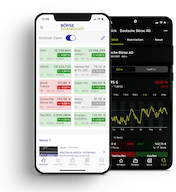Market sentiment: “Secret dip buying”

Despite poor sentiment: DAX makes a comeback.
Summary
With a gain of 2.5 percent from its lows, the DAX has impressively recovered from its weak phase during the previous week. However, the mood among market participants has not improved to the same extent. Both institutional and private investors are in a worse mood than they were last Wednesday. Many of the pessimists, who are in the majority, have therefore not been able to bring themselves to buy back shares, even though the price gains were not insignificant.
Joachim Goldberg explains why the DAX was nevertheless able to stage a veritable recovery from its lows of the previous week.
6 August 2025. FRANKFURT (Goldberg & Goldberg). Until last Thursday, it seemed as though stock market traders had written off the so-called tariff deal between the EU and the US, but then many players were reportedly left with a feeling of disappointment. Perhaps because too many commentators were now of the opinion that the framework agreement was anything but good for the EU? In fact, there are several indications that international capital outflows in particular had a negative impact on the DAX until last weekend. The euro's temporary sharp decline against the US dollar also supports this view. Not to mention the news from the US, where the labor market report and its revisions for previous months led to the head of the Bureau of Labor Statistics (BLS), Erika McEntarfer, being dismissed by US President Donald Trump on Friday.
The speed with which stock market traders in Germany seem to be getting used to negative news from the US is reflected in the DAX's recovery at the beginning of the week. Even Donald Trump's renewed tariff threats against the EU were largely ignored by market participants, with the result that the DAX fell by only 0.9 percent compared to our previous sentiment survey. After all, the DAX had lost 4.3 percent of its value at times from its interim high last week.
No profit-taking among bears
The mood among the institutional investors with a medium-term trading horizon that we surveyed has deteriorated further compared with the previous week. Our Frankfurt Stock Exchange Sentiment Index has fallen by 4 points to a new level of -21. The 5 percentage point increase in the bear camp is largely attributable to previously neutral players, a small proportion of whom have simultaneously increased the bull camp by one percentage point.
A very similar development has taken place among private investors. On the one hand, because the Frankfurt Stock Exchange Sentiment Index in this panel has deteriorated by 13 points to a new level of -4. And on the other hand, because more than two-thirds of the 10-point increase in the bear camp is attributable to investors who were previously neutral. The remaining 30 percent are former bulls who have reversed their position by 180°. It is striking that the majority of this 30 percent can be traced back to private investors whom we surveyed via social media. The change among the remaining private investors is almost identical to that among institutional investors.
Invisible buyers
In both panels, sentiment deteriorated slightly compared to the previous week, narrowing the gap between them. The bottom line, of course, is that the typical dip buying that usually follows significant declines in the DAX appears to have failed to materialize. Or rather, they are not visible. There are indications (such as the Sentix survey) that sentiment among institutional investors was much worse at the end of last week and that some short positions may have been covered in the meantime – hence the interim rebound of the DAX, which has recovered by 2.5 percent since the end of last week.
However, the proportion of optimists has only increased slightly compared to the previous week, while new pessimists have joined the ranks. Despite the DAX's significant decline in the meantime, they have not been able to decide to cover their positions and would probably only be willing to cover their positions again (possibly only in the 23,050/100 range) in exchange for a larger risk premium, thereby creating demand there. However, should there be a further significant rise in the DAX (above 24,450/500), which would come as a surprise to many, the majority of investors would be ill-prepared for it.
by Joachim Goldberg
6 August 2025, © Goldberg & Goldberg for boerse-frankfurt.de
Videokommentar
Sentiment index of institutional investors

| Bullish | Bearish | Neutral | |
|---|---|---|---|
| Total | 25% | 46% | 29% |
| vs. last survey | +1% | +5% | -6% |
DAX (change since last survey): 23,975 points (-225 points since last survey)
Frankfurt Stock Exchange Sentiment Index for institutional investors: -21 points (-4 points since last survey)
Sentiment index of private investors

| Bullish | Bearish | Neutral | |
|---|---|---|---|
| Total | 39% | 43% | 18% |
| vs. last survey | -3% | +10% | -7% |
DAX (change since last survey): 23,975 points (-225 points since last survey)
Frankfurt Stock Exchange Sentiment Index for private investors: -4 points (-13 points since last survey)
About the Frankfurt Stock Exchange Sentiment Index
The Frankfurt Stock Exchange Sentiment Index ranges between -100 (total pessimism) and +100 (total optimism), with the transition from positive to negative values marking the neutral line.
More articles from this columnist
| Time | Title |
|---|






